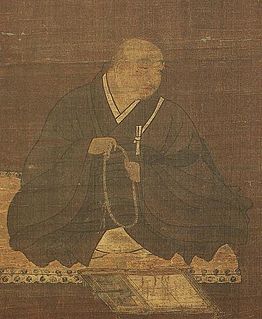 W
WJōdo-shū , also known as Jōdo Buddhism, is a branch of Pure Land Buddhism derived from the teachings of the Japanese ex-Tendai monk Hōnen. It was established in 1175 and is the most widely practiced branch of Buddhism in Japan, along with Jōdo Shinshū.
 W
WChion-in in Higashiyama-ku, Kyoto, Japan is the headquarters of the Jōdo-shū founded by Hōnen (1133–1212), who proclaimed that sentient beings are reborn in Amida Buddha's Western Paradise by reciting the nembutsu, Amida Buddha's name.
 W
WHōnen was the religious reformer and founder of the first independent branch of Japanese Pure Land Buddhism called Jōdo-shū . He is also considered the Seventh Jōdo Shinshū Patriarch.
 W
WJikō-ji (持光寺) is a Buddhist temple in Onomichi, Hiroshima Prefecture belonging to the Seizan Zenrin-ji of Jōdo-shū Buddhism. Its principal image is a seated image of Amida Nyōrai. The temple houses a National Treasure, an 1153 Heian Period hanging scroll of Fugen Enmei (Samantabhadra).
 W
WRenkei-ji (蓮馨寺) is a Buddhist temple of the Jōdo-shū sect in Kawagoe City, Saitama Prefecture. Its mountain name (sangō) is Kōhozan, while its monastery name (ingō) is Hōchi-in. The temple is dedicated to Amida Buddha.
 W
WShōkū , sometimes called Seizan (西山), was a disciple of Hōnen, founder of the Jōdo-shū Buddhist sect. Shōkū later succeeded Jōhen, another disciple of Hōnen, as the head of a former Shingon Buddhist temple, Eikandō, established a separate branch of Jōdo-shū called the Seizan branch, and completed the transition of Eikandō from a Shingon temple into a Jōdo shū one.
 W
WZenkō-ji is a Buddhist temple located in the city of Nagano, Japan. The temple was built in the 7th century. The modern city of Nagano began as a town built around the temple.